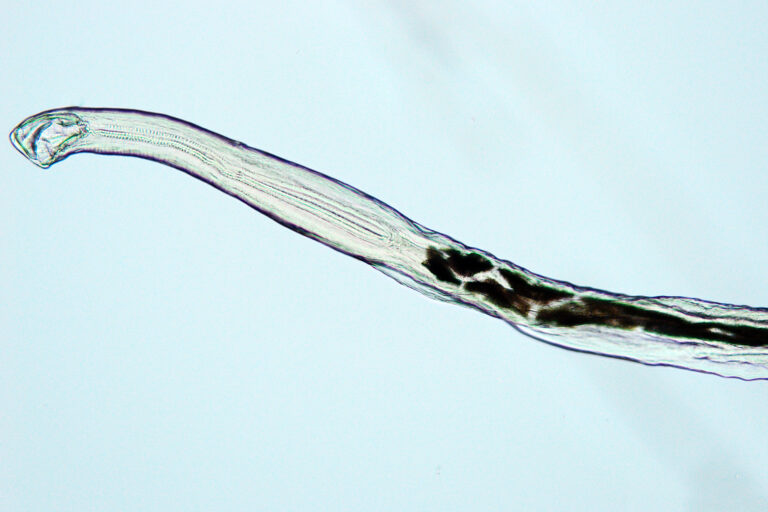Uncinaria stenocephala

Foxes – DOGs – CATs
Male individuals of the hookworm Uncinaria stenocephala are characterized by the bursa copulatrix, which serves to secure the female during reproduction (Catalano et al., 2015). This parasite develops from an egg through various larval stages into an adult. Fully developed males reach a body length between 7.95 mm and 9.38 mm, while females are slightly larger, measuring between 10.43 mm and 12.54 mm in length. The entire body surface is covered with fine transverse stripes. Uncinaria stenocephala parasitizes the small intestine of dogs and other carnivores (Gibbs, 1961).
Human Pathogenicity: Infection of humans by the nematode species Uncinaria stenocephala is possible. Transmission can occur, for example, through an infected pet (dog), with humans serving as accidental hosts. The larvae of this hookworm penetrate the human skin (Mehlhorn, 2012).
-
Catalano, S et al. (2015)Morphological variability and molecular identification of Uncinaria spp. (Nematoda: Ancylostomatidae) from grizzly and black bears: new species or phenotypic plasticity? In: Journal of Parasitology, vol. 101, n° 2, p. 182–192.
-
Gibbs, HC (1961)Studies on the life cycle and developmental morphology of Dochmoides stenocephala (Railliet 1884) (Ancylostomidae: Nematoda). In: Canadian Journal of Zoology, vol. 39, n° 3, p. 325–348.
-
Mehlhorn, H (2012)Die Parasiten des Menschen. Erkrankungen erkennen, bekämpfen und vorbeugen: Springer-Verlag.